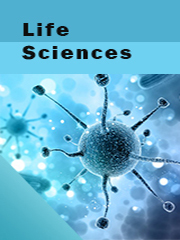Report overview
Anticoagulant drugs (also known as blood thinners) are chemical substances that prevent or reduce coagulation of blood and prolong the blood clotting time.
This report aims to provide a comprehensive presentation of the global market for Peptide and Anticoagulant Drugs, with both quantitative and qualitative analysis, to help readers develop business/growth strategies, assess the market competitive situation, analyze their position in the current marketplace, and make informed business decisions regarding Peptide and Anticoagulant Drugs. This report contains market size and forecasts of Peptide and Anticoagulant Drugs in global, including the following market information:
Global Peptide and Anticoagulant Drugs Market Revenue, 2018-2023, 2024-2029, ($ millions)
Global Peptide and Anticoagulant Drugs Market Sales, 2018-2023, 2024-2029, (K Units)
Global top five Peptide and Anticoagulant Drugs companies in 2022 (%)
The global Peptide and Anticoagulant Drugs market was valued at US$ 30180 million in 2022 and is projected to reach US$ 41330 million by 2029, at a CAGR of 4.6% during the forecast period. The influence of COVID-19 and the Russia-Ukraine War were considered while estimating market sizes.
Americas is the largest Anticoagulant Drugs market with about 51% market share. Europe is follower, accounting for about 27% market share.The key manufacturers are Bristol-Myers Squibb, Bayer, Pfizer, Johnson & Johnson, Sanofi, Boehringer Ingelheim, Daiichi Sankyo etc. Top 3 companies occupied about 56% market share.
We surveyed the Peptide and Anticoagulant Drugs manufacturers, suppliers, distributors and industry experts on this industry, involving the sales, revenue, demand, price change, product type, recent development and plan, industry trends, drivers, challenges, obstacles, and potential risks.
Total Market by Segment:
Global Peptide and Anticoagulant Drugs Market, by Type, 2018-2023, 2024-2029 ($ Millions) & (K Units)
Global Peptide and Anticoagulant Drugs Market Segment Percentages, by Type, 2022 (%)
Hormonal
Antibiotic
ACE Inhibitor
Antifungal
Others
Global Peptide and Anticoagulant Drugs Market, by Application, 2018-2023, 2024-2029 ($ Millions) & (K Units)
Global Peptide and Anticoagulant Drugs Market Segment Percentages, by Application, 2022 (%)
Diabetes
Infectious Diseases
Cancer
Osteoporosis
Cardiology
Gynecology
Other Applications
Global Peptide and Anticoagulant Drugs Market, By Region and Country, 2018-2023, 2024-2029 ($ Millions) & (K Units)
Global Peptide and Anticoagulant Drugs Market Segment Percentages, By Region and Country, 2022 (%)
North America
US
Canada
Mexico
Europe
Germany
France
U.K.
Italy
Russia
Nordic Countries
Benelux
Rest of Europe
Asia
China
Japan
South Korea
Southeast Asia
India
Rest of Asia
South America
Brazil
Argentina
Rest of South America
Middle East & Africa
Turkey
Israel
Saudi Arabia
UAE
Rest of Middle East & Africa
Competitor Analysis
The report also provides analysis of leading market participants including:
Key companies Peptide and Anticoagulant Drugs revenues in global market, 2018-2023 (Estimated), ($ millions)
Key companies Peptide and Anticoagulant Drugs revenues share in global market, 2022 (%)
Key companies Peptide and Anticoagulant Drugs sales in global market, 2018-2023 (Estimated), (K Units)
Key companies Peptide and Anticoagulant Drugs sales share in global market, 2022 (%)
Further, the report presents profiles of competitors in the market, key players include:
Celsus
Baxter
Hemmo Pharma
Biofer
Wockhardt
AmbioPharm
Bachem
Sun Pharmaceutical Industries
Pfizer
Abbott Laboratories
Leo Pharma
Aspen
Takeda
Teva
Sanofi
Eli Lilly
Novo Nordisk
Outline of Major Chapters:
Chapter 1: Introduces the definition of Peptide and Anticoagulant Drugs, market overview.
Chapter 2: Global Peptide and Anticoagulant Drugs market size in revenue and volume.
Chapter 3: Detailed analysis of Peptide and Anticoagulant Drugs manufacturers competitive landscape, price, sales and revenue market share, latest development plan, merger, and acquisition information, etc.
Chapter 4: Provides the analysis of various market segments by type, covering the market size and development potential of each market segment, to help readers find the blue ocean market in different market segments.
Chapter 5: Provides the analysis of various market segments by application, covering the market size and development potential of each market segment, to help readers find the blue ocean market in different downstream markets.
Chapter 6: Sales of Peptide and Anticoagulant Drugs in regional level and country level. It provides a quantitative analysis of the market size and development potential of each region and its main countries and introduces the market development, future development prospects, market space of each country in the world.
Chapter 7: Provides profiles of key players, introducing the basic situation of the main companies in the market in detail, including product sales, revenue, price, gross margin, product introduction, recent development, etc.
Chapter 8: Global Peptide and Anticoagulant Drugs capacity by region & country.
Chapter 9: Introduces the market dynamics, latest developments of the market, the driving factors and restrictive factors of the market, the challenges and risks faced by manufacturers in the industry, and the analysis of relevant policies in the industry.
Chapter 10: Analysis of industrial chain, including the upstream and downstream of the industry.
Chapter 11: The main points and conclusions of the report.
